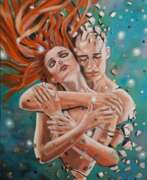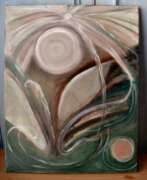Abstract illusionism

Abstract illusionism
Abstract illusionism, an artistic movement that emerged prominently in the United States during the mid-1970s, is noted for combining elements of expressionism and hard-edge abstract painting with added perspectives, artificial light sources, and simulated shadows. This unique combination creates an illusion of three-dimensional space on a two-dimensional surface. Coined by art historian and critic Barbara Rose in 1967, abstract illusionism stands out from traditional Trompe-l'œil art as its pictorial space appears to project outwards, unlike the inward recession seen in classical painting.
The movement is characterized by its abstract nature, as opposed to the realism of Trompe-l'œil. By the early 1980s, many visual devices from abstract illusionism were absorbed into commercial applications in graphic and fabric design. This commercial proliferation eventually led to the decline of the movement, as several original artists moved away from the style. Notable artists who practiced or were associated with abstract illusionism include Ronald Davis, Allan D'Arcangelo, Al Held, James Havard, and Jack Lembeck.
Abstract illusionism was also used to describe certain sculptures, with Bryan Robertson in 1972 using the term for works by artists like Kenneth Draper and William Tucker. The movement was showcased in several major museum exhibitions, such as the "Abstract Illusionism" at the Paul Mellon Arts Center in 1977 and "The Reality of Illusion" at the Denver Art Museum in 1979.
This movement is a fascinating subject for collectors, auctioneers, and experts in art and antiques, representing a unique blend of abstract art and illusionistic techniques. For those interested in staying informed about new product sales and auction events related to abstract illusionism, signing up for updates is a practical step. This subscription will offer insights specifically into the evolving world of this distinctive art movement.
| Country: | America, USA |
|---|---|
| Start of the period: | 1967 |


